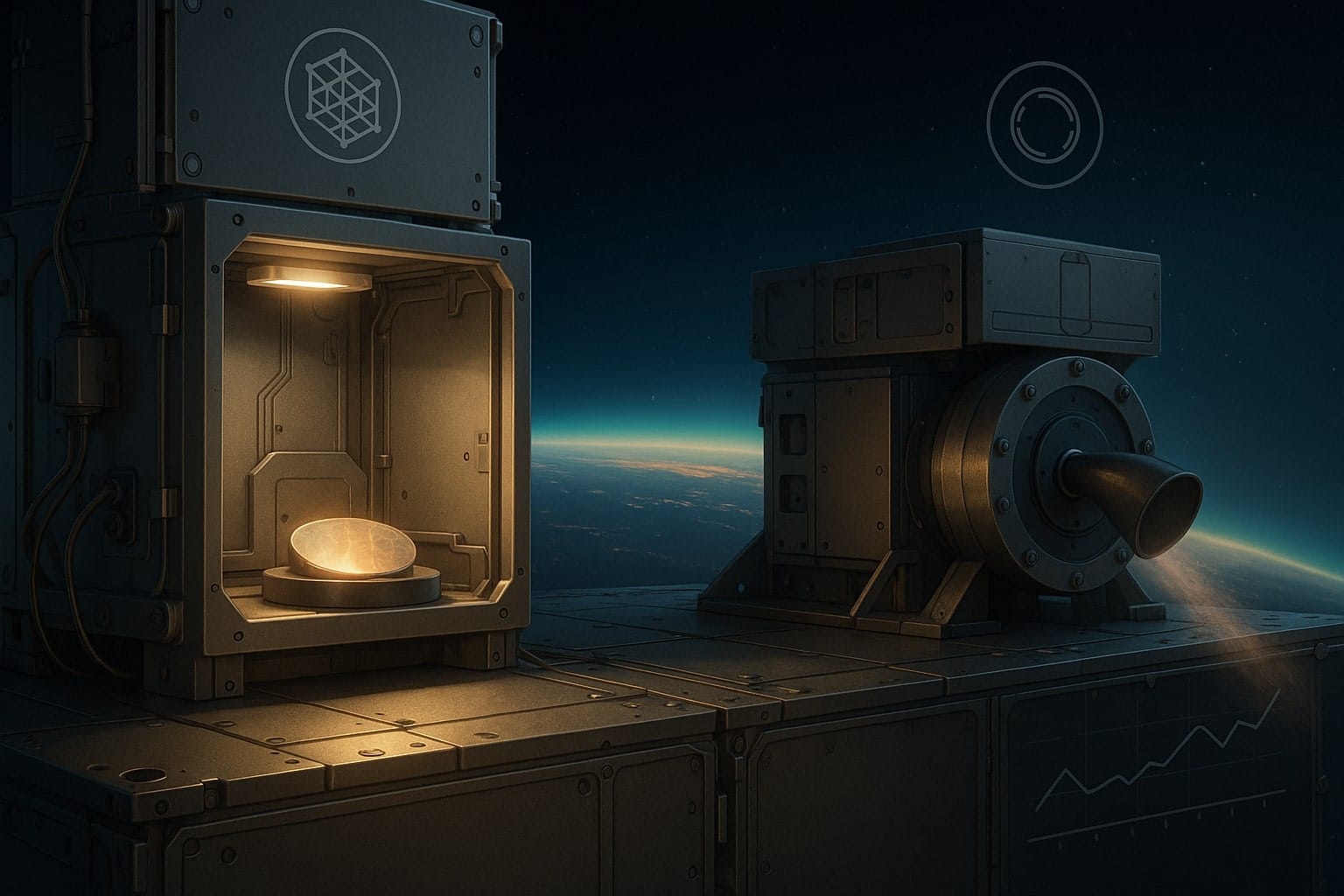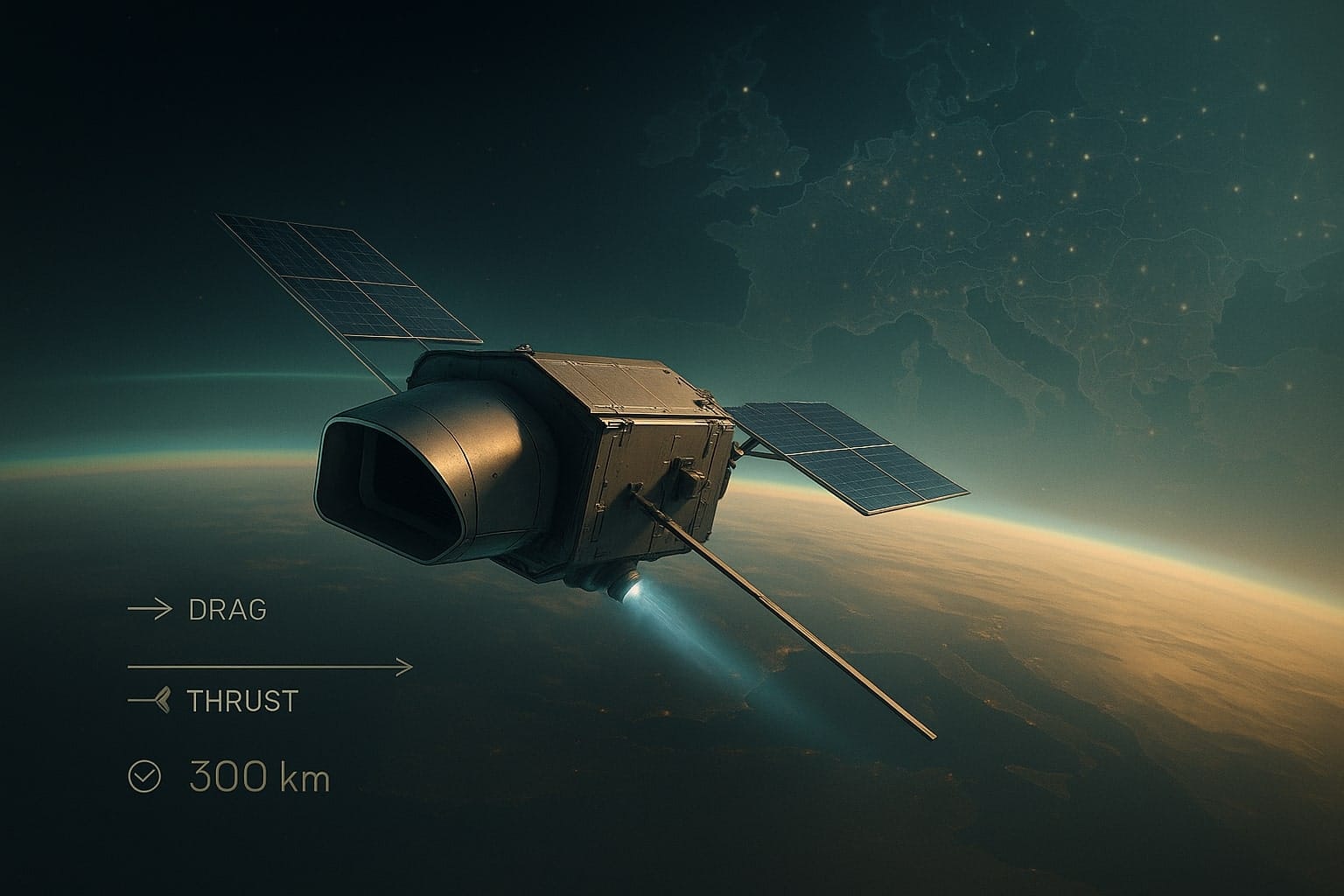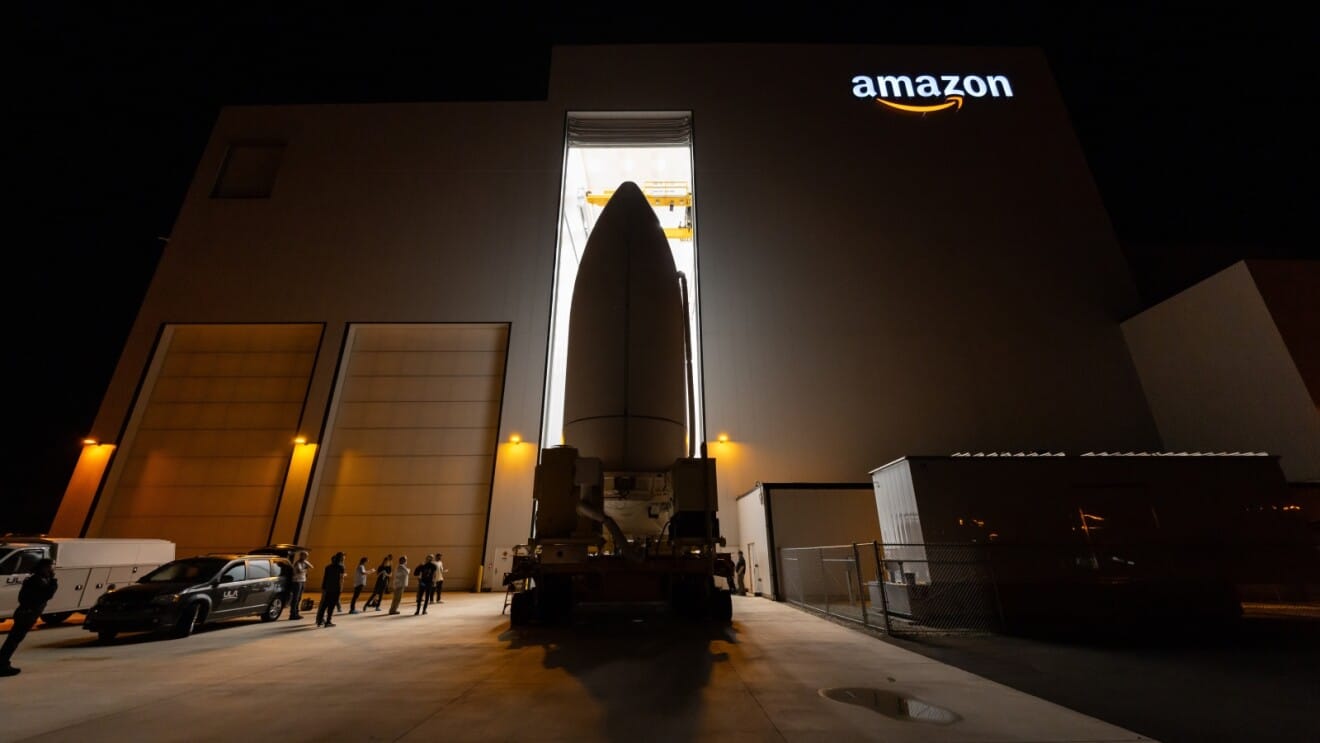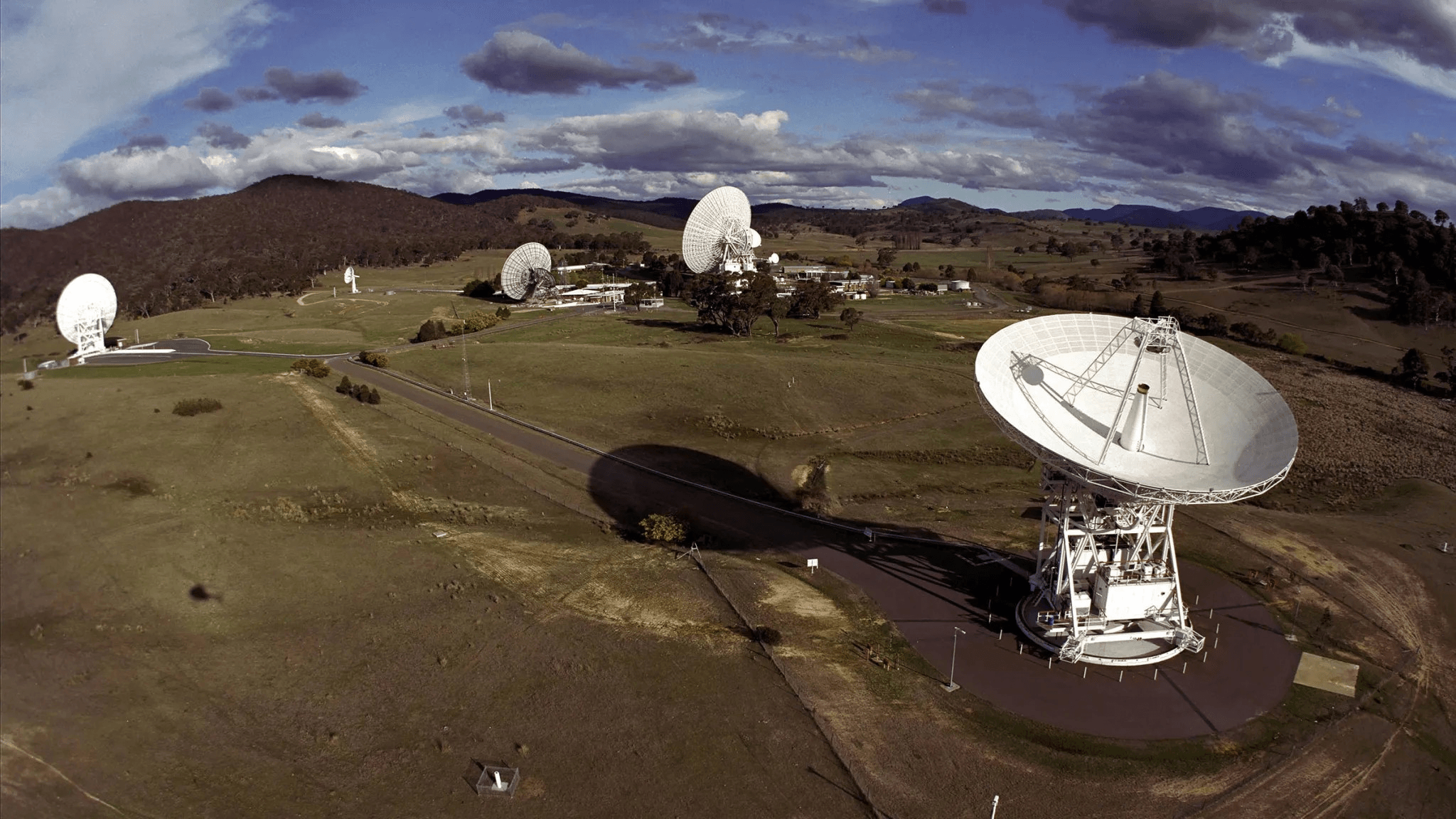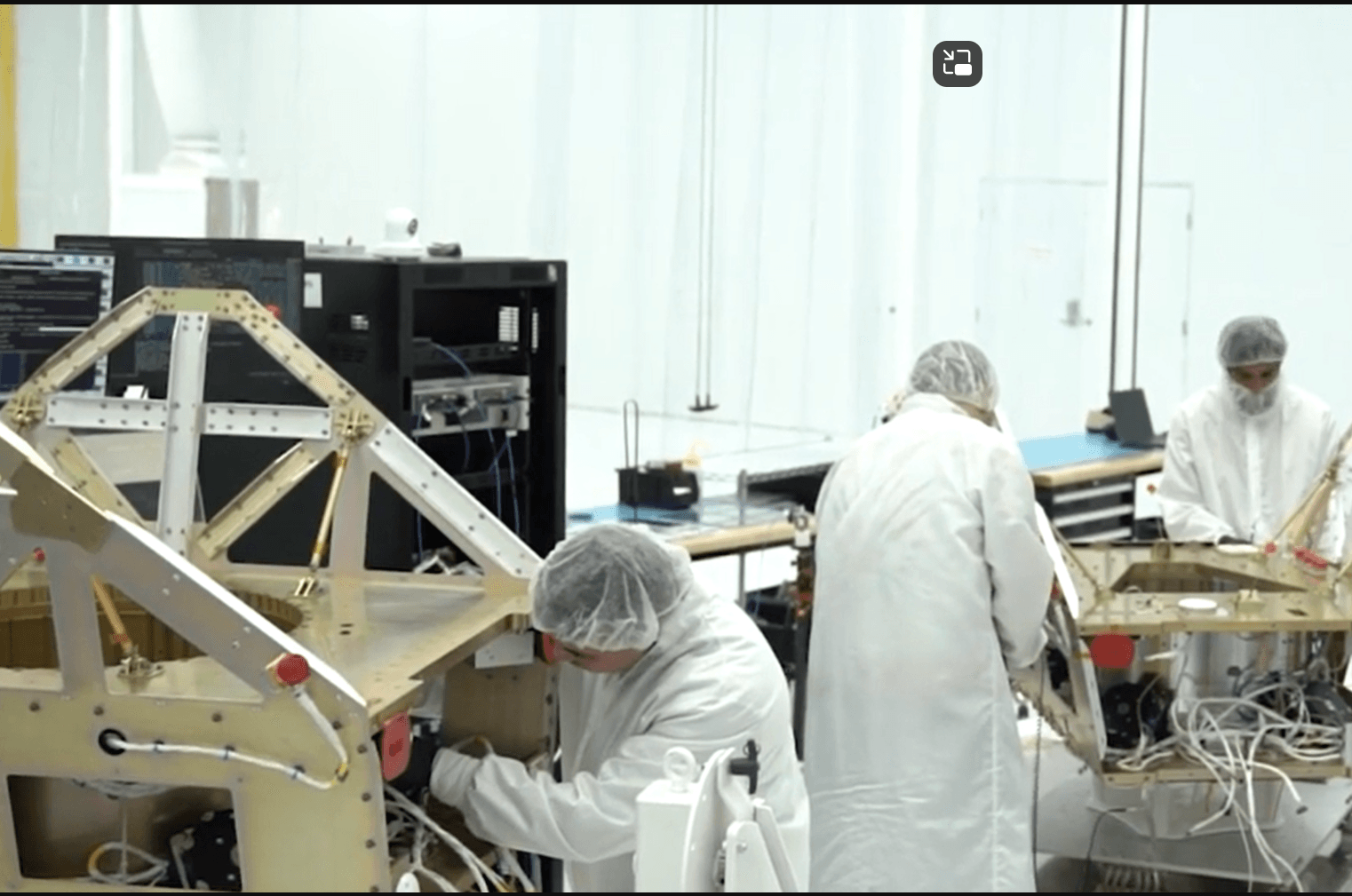In a year when many startups are tightening belts, one Los Angeles space venture is breaking the mold – and the bank. Apex, a two-year-old satellite manufacturer, has just raised a staggering $200 million in Series C funding, catapulting its total funding well past $300 million. The cash infusion, led by Point72 Ventures with 8VC and joined by Andreessen Horowitz among others, isn’t just another Silicon Valley headline – it’s a signal that the race to build space infrastructure at scale is heating up. Apex’s vision is bold: to churn out “plug-and-play” satellite buses on an assembly line, slashing the time and cost to get payloads in orbit. In doing so, the upstart is taking on both aerospace incumbents and redefining what “space manufacturing” means, positioning itself at the nexus of commercial innovation and defense preparedness.
The move comes at a pivotal moment for the space industry. The U.S. and its allies are seeking more resilient orbital infrastructure – constellations of smaller, cheaper satellites that can be rapidly deployed to orbit. Investors, sensing a gold rush in space tech, are pouring capital into ventures that promise to build this future. Apex’s latest round – one of the largest private space financing deals in recent memory – epitomizes this trend. It also invites a closer look at how Apex differs from its peers in the burgeoning space manufacturing domain, from in-orbit factories like Varda Space Industries and Space Forge to established players like Redwire. Can Apex’s strategy of building satellites ahead of demand truly change the game? And what do such mega-deals mean for the broader aerospace and defense landscape? In this editorial analysis, we’ll unpack Apex’s rise, its plans for that hefty war chest, and how it stacks up against rivals in the new space economy.
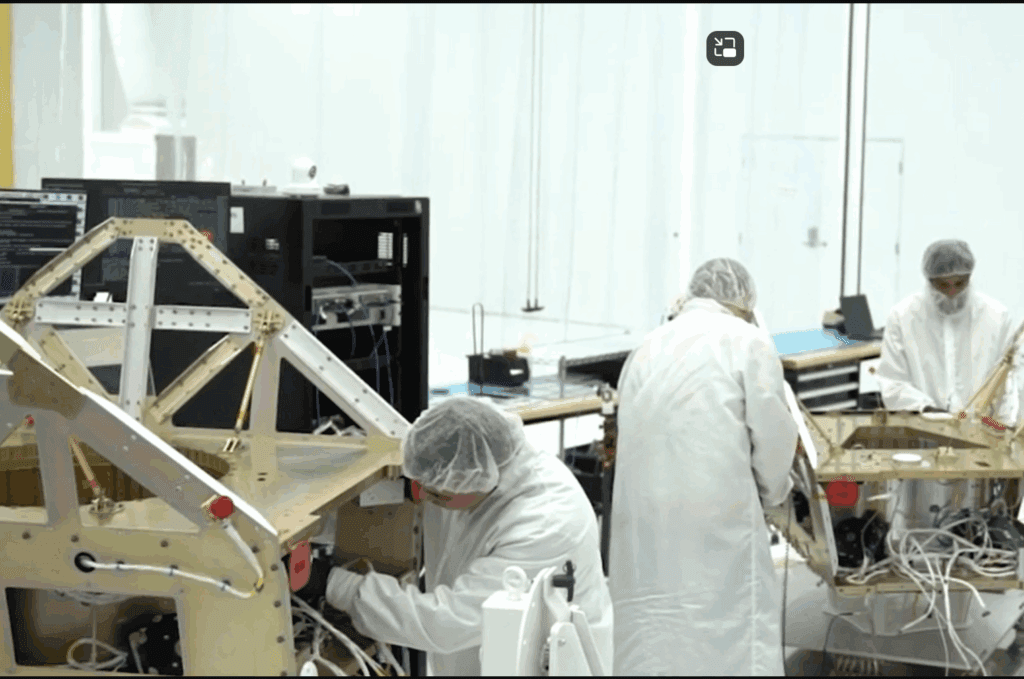
Table of Contents
ToggleFrom Startup to Space Supplier: Apex’s Meteoric Rise
Apex’s journey from scrappy startup to industry frontrunner has been remarkably swift. Founded in 2022 by CEO Ian Cinnamon and CTO Max Benassi, Apex set out to do for satellites what Henry Ford did for cars – standardize and mass-produce them. Cinnamon, an MIT and Stanford alum who previously sold a tech startup to Palantir, teamed with Benassi, a former SpaceX engineer, giving Apex a blend of software savvy and manufacturing expertise from day one. Their premise was simple but ambitious: build satellite buses in bulk, stock them like inventory, and deliver them to customers with unprecedented speed.
That vision quickly attracted investors. By mid-2023, Apex raised a $16 million Series A, followed in June 2024 by a $95 million Series B – huge sums for a satellite hardware company barely out of the garage. The company’s first product, the Aries satellite bus, moved from concept to orbit in roughly a year. In March 2024, an Aries bus launched on SpaceX’s Transporter-10 rideshare mission and has since celebrated over one year of successful operations in orbit. That rapid execution proved Apex could deliver on its promise of speed. It also didn’t hurt that Aries’ inaugural flight carried a payload computer for defense tech firm Anduril Industries – a high-profile customer that would soon become a strategic partner.
Now comes Apex’s Series C round of $200 million, announced April 29, 2025. According to Reuters, the raise was driven by surging demand and the lure of potential government contracts on the horizon. “We’re orientating the company to be the backbone platform provider of Golden Dome – and associated capabilities,” CEO Ian Cinnamon told Reuters. Golden Dome is the U.S. Pentagon’s ambitious next-generation missile defense initiative, reportedly involving space-based sensors and interceptors, with Congress eyeing $27 billion for its initial stages. Apex, still a newcomer, has no contracts in hand for Golden Dome yet. But the mere prospect of that program – a kind of 21st-century “Star Wars” defense shield – has private investors scrambling to place bets on likely suppliers. In Apex, they see a startup that could provide the standard satellite chassis for fleets of defense satellites, essentially becoming a “backbone” platform for U.S. space security.
Series C Highlights:
- Who’s Funding: The round was led by Point72 Ventures and co-led by 8VC, with participation from existing backer Andreessen Horowitz and new investors Washington Harbour Partners and StepStone Group. This mix of Silicon Valley, Wall Street (Point72 is Steve Cohen’s venture arm), and even private equity players signals broad confidence in Apex’s model. As Point72’s Chris Morales put it, Apex’s focus on “rapid delivery, transparent pricing, and the highest possible quality” has won trust from customers ranging from the U.S. Space Force to major defense primes.
- Total War Chest: With this raise, Apex’s total funding tops $300 million since 2022. That war chest puts it in rarefied company among space startups. (For perspective, in-space manufacturing company Varda’s total funding is about $145 million and even SpaceX’s Starlink was largely bankrolled internally before later big raises.) Apex now has the capital to scale aggressively – or as CEO Cinnamon quipped, enough to “vertically integrate faster, and buy more parts ahead of time” to stockpile inventory.
- Use of Proceeds: The new funds are earmarked to expand manufacturing at Apex’s Los Angeles facility, dubbed “Factory One.” The company will ramp up to a maximum capacity of 12 satellite buses per month – a rate virtually unheard of in the satellite world. Much of the money will go toward buying components in bulk and building dozens of satellites on spec (“ahead of need”) so that customers don’t have to wait years for a spacecraft – they can get one in weeks or days. Apex is also investing in vertical integration, bringing more subsystem production in-house to reduce reliance on slow suppliers. In short, Apex is using venture capital to create a satellite stockpile for the first time in history.
- Focus on Defense and Gov: A key driver for Apex’s growth is demand from defense contractors, government agencies, and commercial operators alike. But defense is clearly front and center. The company openly says it is positioned to support programs like the Space Development Agency’s proliferated constellations and Golden Dome missile-defense network. The Series C announcement touted that Apex’s ready-made buses can support “missile defense, space-based interceptors, LEO and GEO space domain awareness, and combat power” missions, in addition to more traditional comms and remote sensing roles. It’s a striking alignment of a private startup with national security aims – one that lead investor 8VC’s founder Joe Lonsdale explicitly framed in geopolitical terms: “Apex’s satellite buses are delivering the on-orbit proliferation required for America to prevail in the new space race,” Lonsdale said.
Apex’s rise also reflects some fortuitous timing. The company was founded just as two trends converged: the plummeting cost of launch and the surging need for many more satellites. Over the past decade, SpaceX and others drove down launch prices, making it economical to deploy large constellations. According to one analysis, space companies have attracted $286 billion in investment since 2015, with 86% of that going toward satellite technologies. And McKinsey forecasts the number of active satellites could jump from a few thousand today to 27,000 by 2030 (base case) – or even 65,000+ in high-demand scenarios. This boom is fueled by everything from global broadband projects to Earth observation and military surveillance needs. Yet manufacturing all those satellites quickly is a major bottleneck. That’s the bottleneck Apex wants to eliminate with its productized buses.
“We build satellites ahead of demand, so if you need one, it doesn’t take years, it takes days or weeks,” Cinnamon explains. It’s a radical departure from the traditional aerospace model, where each spacecraft is often a bespoke project. Apex’s standard buses (think of them as Lego-like platforms carrying propulsion, power, computers, etc.) can be tailored via configurable components but are fundamentally off-the-shelf. An analogy in the computing world would be buying a standard PC chassis and then plugging in the graphics card or sensor you need, rather than crafting a new machine from scratch each time. By shifting risk and cost away from custom builds, Apex lets its customers focus on their unique payload or mission while Apex handles the rest. “The only manufacturer of off-the-shelf satellite buses” is how the company boldly markets itself.
That strategy is resonating especially in the defense sector. In October 2024, defense-tech firm Anduril Industries – known for AI and autonomous drones – announced it had selected Apex to provide satellite buses for new military space missions. Anduril had never built a full satellite before; it specializes in software and payloads. But it saw value in partnering with Apex for the “trunk” of the spacecraft (the bus). After Apex’s Aries bus successfully flew an Anduril payload processor on a test mission in early 2024, Anduril committed to using Apex buses for its own self-funded satellite launches by 2025. “We believe that the U.S. government needs more options to protect our interests in this domain, and that means bringing forward new, innovative players like Apex,” Anduril’s SVP Gokul Subramanian said. He noted Apex’s ability to rapidly build satellites will help deploy large constellations for tasks like space domain awareness (tracking objects in orbit) and real-time data relay. In other words, Apex enables firms like Anduril to field clusters of satellites fast, without having to become satellite manufacturers themselves. Both companies have made clear they plan to jointly bid for military constellations, including the Space Development Agency’s missile-warning and data-relay networks.
This alignment with defense needs paid off in another way: Apex recently won a $46 million U.S. Space Force contract to further develop its buses. Details of the award are scarce (it likely involves prototyping or delivering a set number of units), but it signals the Pentagon’s interest in Apex’s approach. Indeed, Apex says it “intimately understands the needs of the warfighter” and that without companies like it, “America cannot achieve the kind of mass it needs in space in the relevant time frame and at an acceptable cost,” as Washington Harbour Partners’ CEO Mina Faltas (a new investor) remarked pointedly. That quote underscores how strategic the ability to mass-produce satellites has become viewed: it’s not just a commercial play, but a strategic capability in great-power competition.
Plug-and-Play Satellites: Apex’s Product Line and Ambitions
Central to Apex’s strategy is its product line of standardized satellite buses. At the moment, the workhorses are:
- Aries: Apex’s first bus model, roughly a 100 kg “ESPA-class” satellite (named after the Evolved Expendable Launch Vehicle Secondary Payload Adapter standard). Aries can support payloads of up to ~150 kg. In practice, that might mean a total mass in the few-hundred-kilogram range when fully fueled – small enough to launch several at a time on a Falcon 9 rideshare. Aries is designed for Low Earth Orbit (LEO) missions. Apex has hinted at variants like a “GEO Aries” for geostationary missions (unveiled in late 2024), likely beefed up with radiation-hardened components and larger propulsion to reach orbits 36,000 km away. Aries has now proven itself with at least one year-long orbital mission (Aries SN1) and is Apex’s template for rapid production going forward.
- Nova: A larger bus platform slated to debut in 2026. Nova will carry payloads in the 200–500 kg class – effectively doubling the capacity of Aries. CEO Cinnamon has described Nova as a “constellation workhorse” for more complex missions, including potentially the Space Development Agency’s missile-tracking satellites which have multiple sensors. Nova’s first units are in development and expected to launch in the next year. By offering more power and volume, Nova would let Apex serve customers who need mid-sized satellites (think: a high-end imaging camera, a secure communications relay, or multiple instruments on one bus) without leaving Apex’s standardized ecosystem.
- Comet (Future): In earlier plans, Apex mentioned an even larger bus, code-named Comet, for payloads above 500 kg. Production of Comet was said to be a couple years out as of 2024. It’s unclear if Comet is still on the roadmap or if Nova’s envelope has been expanded to cover that range. Regardless, Apex’s intent is clear – to offer a family of buses from small to medium class, covering most of the market except very large satellites. By analogy, if Aries is like a compact car and Nova an SUV, Comet might be a semi-truck – each built on the same assembly philosophy. This could enable Apex to tap into not just LEO constellations but also GEO missions (communications satellites, etc.) and maybe even lunar spacecraft in the future.
What’s notable is how Apex’s approach differs from the traditional satellite builders. Historically, if a customer (say a weather agency or a telecom company) needed a satellite, they’d either custom-design it or buy a tailored bus from an aerospace contractor. Each unit could take 24–48 months to build and test. Apex is collapsing that timeline to <6 months or even ready immediately from stock. They do so by pre-engineering their buses for manufacturability: modular designs, generic interfaces, and heavy use of automation in assembly. The Factory One facility in LA, at 50,000 square feet, is geared for throughput rather than one-off builds. Apex is even employing techniques from the automotive world – for instance, using a configurator tool where customers can literally click through options (solar panel size, propulsion type, etc.) on Apex’s website as if speccing out a new laptop. This is a far cry from the customary process of dozens of design reviews and bespoke engineering for each mission.
The plug-and-play ethos extends to integration: Apex’s goal is that when a client’s payload (be it a camera, a radar, an experiment) is ready, they can pop it into an Apex bus that’s already built, do minimal testing, and launch. “When the payloads are ready, we’re able to integrate them in a matter of weeks instead of years,” Cinnamon said. This just-in-time delivery can be game-changing for certain use cases. Imagine a sudden need to deploy satellites to monitor a natural disaster, or a military urgency to replace satellites lost in a conflict – having inventory on the shelf is a strategic advantage. Apex is essentially ensuring a stock of “spare satellites” exist for the first time ever.
Of course, executing this model is not without challenges. Building complex spacecraft in advance means fronting a lot of capital (hence the need for big VC funding). It also carries the risk of guessing the wrong specs – if you build 30 satellites with a certain configuration and the market shifts to a different standard (say, different payload interface or processor), you could be stuck. Apex mitigates this by focusing on core commonalities (power systems, attitude control, structure) that don’t change much, and by keeping options open via modular subsystems. Still, it’s a bold bet on standardization in a field that has historically resisted one-size-fits-all solutions.
Apex’s leadership likes to point out that this philosophy isn’t pulled from thin air. Cinnamon notes that during his prior work at Palantir (a data software firm known for defense contracts), he dreamed up the idea years ago as he saw how slow space acquisitions were. The company’s staff includes veterans from SpaceX (which itself revolutionized rocketry with reusable rockets) and others who understand both software and hardware. By marrying Silicon Valley speed with aerospace reliability, Apex is trying to chart a new course. It’s telling that Andreessen Horowitz (a16z), a marquee Silicon Valley VC, led Apex’s seed round in 2022. A16z is known for backing companies that blur the line between defense and tech (e.g., Anduril, Oculus, etc.). Apex fits that mold perfectly.
Beyond Apex: The Broader Space Manufacturing Landscape
Apex’s success is part of a larger narrative in the space industry: the rise of space manufacturing ventures. Not all of these companies build the same product – in fact, many are doing something quite different from Apex. But they share a common thread of treating space not just as a destination, but as a place to build and create. Let’s look at a few key players and how Apex compares:
Varda Space Industries – Factories in Orbit, Products on Earth
If Apex is building the “trucks” of the space economy, Varda Space is trying to create the goods those trucks carry. Founded in 2020 in California, Varda aims to manufacture high-value products in microgravity and bring them back to Earth. Their focus has been on pharmaceuticals and advanced materials that benefit from zero-G. In April 2024, Varda raised a $90 million Series B round led by Caffeinated Capital (with participation from heavyweights like Lux Capital, Founders Fund, and Khosla Ventures). This brought Varda’s total funding to about $145 million – interestingly, almost exactly half of what Apex has now raised.
Where Apex is cranking out satellite buses, Varda is building small space factories. Their spacecraft are essentially autonomous labs: each one goes up, runs an experiment or production batch in microgravity, then returns a capsule to Earth with the finished product. In June 2023, Varda launched its first test mission (vehicle W-1), which successfully returned to Earth in late 2023 after some regulatory delays. That mission carried an experiment to reformulate the HIV drug Ritonavir in space. The goal: see if microgravity can produce a purer or more effective formulation of the drug. Varda’s team, led by former SpaceX engineer Will Bruey, believes microgravity allows “unique pharmaceutical formulations not otherwise possible” on Earth. Early signs are promising enough that Varda already has “several publicly traded biopharma” as customers lined up, according to co-founder Delian Asparouhov. Essentially, pharma companies are paying Varda to try making new drugs or drug components in orbit.
What sets Apex apart from Varda is primarily the end product. Apex delivers spacecraft to orbit for customers to operate. Varda delivers physical materials back to Earth to sell. Apex’s revenue model is akin to a satellite manufacturer or even a service provider (if they ever move to leasing satellites); Varda’s model is manufacturing-as-a-service, almost like a space-based pharmaceutical foundry. Both are pushing frontiers of manufacturing, but one is about machines and the other about materials.
For investors, Apex’s appeal is tied to defense and communications markets (big, established buyers with urgent needs), whereas Varda’s appeal is the potential to unlock entirely new markets (pharma, exotic alloys, fiber-optics). Notably, Varda’s success is less guaranteed in the near term – they have to prove that space-made products can be superior and profitable. Apex, by contrast, is tapping into existing demand for satellites that already is overwhelming traditional suppliers. In that sense, Apex is a more immediate “pick-and-shovel” play in the space boom, while Varda is a moonshot on creating new gold out of microgravity.
Space Forge – The UK’s Orbital Foundry and the Reusability Quest
Across the pond in the United Kingdom, Space Forge is Varda’s closest counterpart, though smaller in scale. Based in Wales, Space Forge is developing ForgeStar – a reusable in-orbit manufacturing platform focused on advanced materials, particularly semiconductors. The company’s vision is to return the manufactured goods to Earth and reuse the satellite for multiple missions, achieving a high cadence of production.
Space Forge suffered a setback in 2023 when its first ForgeStar-0 mission was lost due to the failure of Virgin Orbit’s launch. But it has rebounded: in March 2025, the UK Civil Aviation Authority granted Space Forge a license to launch ForgeStar-1, which is slated to fly later this year. This marked the first-ever UK license for in-space manufacturing, a milestone heralded as “groundbreaking” by regulators. ForgeStar-1 will be a demonstration of the company’s core concepts: a scalable, returnable, and re-launchable satellite factory for making high-performance semiconductor crystals in microgravity.
Like Varda, Space Forge touts the unique environment of space – microgravity, ultra-clean vacuum, extreme temperature gradients – as enabling materials “impossible to produce on Earth”. The target outputs include next-gen semiconductors, specialized alloys for quantum computing, and other “supermaterials” that could revolutionize industries from telecom to defense. One intriguing claim: manufacturing certain materials in space could reduce CO₂ emissions by 75% for equivalent production on Earth, because you avoid energy-intensive processes and waste. If true, that suggests a sustainability angle: space factories might one day help clean up heavy industries by offloading the dirty work off-planet.
Space Forge has secured support from the UK government and Europe – for instance, a £7.9 million UK Space Agency grant to build a microgravity research facility, and investment from the NATO Innovation Fund in 2024. However, its venture funding is modest (around $30–40 million in total so far). The company likely operates more like a lean deep-tech startup, relying on grants and partnerships. Recently, Space Forge signed MOUs with major players like Voyager Space (a U.S. company that owns Nanoracks and is developing a private space station) and is collaborating with Sierra Space (on using the Dream Chaser spaceplane for microgravity manufacturing). These partnerships suggest Space Forge is positioning itself within a future ecosystem of space stations and return vehicles – essentially being the material science expert in a network of space infrastructure.
Comparing Apex to Space Forge: again, one builds satellites, the other builds stuff in satellites. Apex’s $200M haul dwarfs Space Forge’s funding, highlighting how much more attractive a near-term manufacturing play (satellite buses) tied to defense can be, versus a longer-term materials science play. But Apex and Space Forge could intersect down the road: For instance, if Space Forge’s reusable factory works, they might need a steady supply of standard satellite buses or space tugs to carry their ForgeStars to orbit and back. Apex could be a supplier or even collaborator (imagine an Apex bus designed for easy hosting of ForgeStar modules). Both companies are, in their own way, pursuing plug-and-play philosophies – Apex plugs payloads into buses, Space Forge wants to plug and unplug entire factory modules for reuse.
Redwire – Assembling the Future in Orbit (the Grown-Up in the Room)
On the other end of the spectrum from these VC-fueled startups is Redwire. Redwire is a publicly traded space infrastructure company (NYSE: RDW) formed in 2020 by merging several established firms, including Made In Space – the pioneers of 3D printing in zero gravity. While Apex, Varda, and Space Forge grabbed headlines with venture rounds, Redwire quietly amassed a portfolio of in-space manufacturing and assembly projects, often in partnership with NASA and the International Space Station (ISS).
Redwire’s approach to space manufacturing is incremental and multifaceted:
- ISS Manufacturing: Redwire operates eight manufacturing and research facilities on the ISS right now, out of over 20 it has developed historically. These include the Additive Manufacturing Facility (AMF) – essentially a 3D printer that has been running on the ISS since 2016 (making tools, parts, and even art in microgravity), and the BioFabrication Facility, which attempts to 3D-print human tissue in space for medical research. Redwire also worked on ZBLAN fiber optic cable manufacturing on the ISS, producing fibers with far fewer imperfections than Earth-made fiber due to microgravity. In essence, Redwire has been delivering proof-of-concept products from space for years: optical fiber segments, protein crystals, even human cell tissues, showing the commercial viability bit by bit.
- OSAM and Archinaut: Redwire (via Made In Space) is the prime on Archinaut One, now part of NASA’s OSAM-2 mission (On-Orbit Servicing, Assembly, and Manufacturing-2). This mission, slated for launch mid-decade, will attempt something groundbreaking: 3D-printing structural beams in space and assembling a functional spacecraft component (a large solar array) on-orbit. It’s a ~$73M NASA contract to demonstrate that future satellites could be launched in compact form and then built out in space (think: build a huge antenna dish once in orbit, rather than folding it up at launch). If successful, Archinaut would be a leap toward self-building spacecraft and perhaps large structures like space habitats.
- Expanding Portfolio: Redwire is also eyeing the semiconductor manufacturing craze. In early 2024, it announced a pathfinder mission for an autonomous in-space semiconductor fabrication platform called MSTIC, set to launch to the ISS. The idea is to test making semiconductor wafers or crystals in microgravity, tapping into the trillion-dollar semiconductor market. “This represents an exciting step to validate space-based manufacturing processes that could deliver superior components beyond what is capable on Earth,” said John Vellinger, Redwire’s President of In-Space Manufacturing. Redwire, in partnership with NASA and ISS National Lab, clearly sees itself as a leader in scaling microgravity production for terrestrial benefit.
- Facilities on the Ground: Redwire is even investing in Earth-based infrastructure to support space manufacturing. It’s opening a new 30,000 sq. ft. facility in Indiana to develop payloads and operate missions for microgravity R&D – effectively a factory for space factories.
In the space manufacturing domain, Redwire stands out as the seasoned player that has been methodically proving technology and locking in government support. It hasn’t raised flashy venture rounds; instead, it went public via SPAC in 2021 to access capital. Its market cap and finances are modest (the space SPAC boom was rocky), but it has revenues from government contracts and a broad customer base. Redwire also provides lots of traditional space components (solar arrays, star trackers, etc.), making it more diversified than a pure microgravity play.
So, how does Apex contrast with Redwire? First, their core business is different: Apex builds satellites; Redwire builds the tools that might one day build satellites in space. In fact, one could imagine a future where Apex satellites carry Redwire-made structures or even use Redwire’s tech to repair themselves. Apex is about scaling production on Earth for use in space, whereas Redwire is advancing production in space, possibly to create things for use in space or on Earth. Apex is VC-driven, willing to move fast and break assumptions; Redwire is NASA-partnered, working on longer-term tech development with heavy R&D.
Interestingly, both are converging on the semiconductor angle: Apex with its focus on satellite constellations for things like space-based sensor networks, Redwire with literal chip manufacturing in orbit to feed Earth’s chip supply chain. Both see a national security narrative too – Apex in proliferated defense satellites, Redwire in securing supply chains and U.S. technological leadership in space manufacturing.
If Apex’s model succeeds wildly, it could potentially partner or compete with Redwire on future government projects. For example, imagine a project to build a large space power station: Redwire might provide the in-space assembly robots, while Apex provides the modular satellites that get assembled. Rather than direct competitors, they are more complementary cogs in the evolving space industry machine – one makes the parts, the other makes the machines that make the parts, so to speak.
How Apex Sets Itself Apart
In summary, Apex occupies a unique niche among these players:
- Market Focus: Apex is zeroed in on satellite buses as a product, primarily serving communications, Earth observation, and defense surveillance markets. Varda and Space Forge are creating physical materials for pharma/tech sectors; Redwire is enabling new capabilities (and serving NASA/DoD needs for tech demos). Apex’s nearer-term revenue streams (selling satellites to commercial and defense customers) are arguably more concrete than those of in-space product startups waiting for a market to develop.
- Speed to Market: Apex already has hardware in orbit and contracts in hand (even a Space Force contract), with a plan to deliver satellites right now. Varda has done one demo and is prepping more; Space Forge is about to do its first orbital demo; Redwire has done many demos but mostly in partnership with government timelines. Apex’s aggressive timeline – essentially behaving like a fast-growth software startup – is unusual in aerospace.
- Funding and Scale: With $200M in fresh funds, Apex can outspend most rivals in scaling manufacturing. Space Forge’s budget is shoestring by comparison; Varda’s is significant but still much less. Redwire has government backing but also the constraints of a public company budget. Apex can afford to hire like mad, buy capital equipment, and potentially undercut competitors on price to grab market share (subsidizing costs with VC money). This has raised eyebrows: it’s not often a company at Series C can already produce a dozen satellites a month – that scale usually comes after decades in business (for context, traditional manufacturers like Airbus or Thales might produce a few dozen satellites per year for large constellations).
- Plug-and-Play Philosophy: Apex’s standardization stands apart. Even other bus makers (like Terran Orbital or Blue Canyon Technologies) typically still build to order. Apex is building to stock. That’s a new paradigm in space. It aligns with a broader tech trend of productizing space – treating satellites less like bespoke spacecraft and more like configurable products. This is similar to how companies like Planet Labs mass-produced Earth imaging microsats in the 2010s, but Apex is doing it at a larger scale and with higher-end satellites.
- Geopolitical Story: Apex has woven itself into the U.S. defense-industrial narrative in a way the others haven’t as directly. The timing with Golden Dome talk is one example – Apex positioning as a patriotic enabler of missile defense. Varda and Space Forge do have defense relevance (e.g., space-made semiconductors for secure systems, or materials for advanced weapons), but their story is more about commerce and industry. Redwire, too, works on military space projects, but with the decorum of a traditional contractor. Apex’s communications have an almost start-up patriotism to them, tapping into the current U.S. government push to leverage commercial tech for defense superiority. As Joe Lonsdale highlighted, there’s a sense of a new space race – not just against other companies, but against strategic rivals like China – and Apex is cast as giving the U.S. an edge.
Investors Double Down on Space Infrastructure
Apex’s blockbuster funding round reflects a broader surge of interest in companies that build the backbone of the space economy. After a slight cooling in 2022–2023 from the frenzied space SPAC boom, venture investors in 2024–2025 have refocused on startups with tangible business models and often with dual-use (commercial and defense) appeal. Space manufacturing and infrastructure is emerging as one of those high-conviction areas.
Consider some recent signals:
- Record Funding in Q1 2025: Early data shows that investment in space startups picked up pace in late 2024 and Q1 2025, especially for those aligned with government needs. Space Capital’s tracking shows hundreds of billions poured into space ventures since 2015, and the trend continues upward. Mega-constellation ventures (SpaceX’s Starlink, Amazon’s Project Kuiper) have validated the market for thousands of satellites, encouraging VCs to back the “picks and shovels” of that boom – which is essentially what Apex is.
- Defense Tech Crossover: Funds like a16z, 8VC, and Lux Capital have explicitly been hunting for startups that can bridge Silicon Valley innovation with Pentagon budgets. Apex, Anduril, Shield AI, Hermeus (hypersonic planes), etc., form a cohort of defense-oriented tech startups attracting big money. Apex’s round included Washington Harbour Partners, led by former Palantir executives, and StepStone Group, a large asset manager – non-traditional space investors, but ones likely drawn by the defense angle. This suggests new pools of capital (private equity, hedge fund ventures) are entering space deals that have national security payoff.
- Investor Quotes Reveal Thesis: The quotes from Apex’s new investors are telling. Point72’s partner called Apex’s approach “key to America realizing its commercial and national security strategies in space”, and 8VC’s Joe Lonsdale explicitly tied it to America prevailing in a space race. These are not generic platitudes; they indicate the investors see government demand (and dollars) as a driving force – a relatively reliable one, since governments spend in recessions or booms if security is at stake. In uncertain economic times, the bet is that space infrastructure – particularly with defense applications – is a growth market insulated from consumer whims.
- SPACs Gave Cautionary Tales: A couple of years ago, many space infrastructure firms went public via SPAC mergers – e.g., Redwire, Astra, Momentus, Spire. Some struggled or failed, teaching VCs that maybe keeping companies private longer (and well-funded) is wiser until they have strong revenue. Apex’s raise might have in another era been done via a SPAC; doing it as a private round suggests investors are willing to supply late-stage capital privately, avoiding the public market pressures until Apex can hit meaningful sales (perhaps after it secures a Golden Dome contract or two). This dynamic means large checks are available for the winners, and Apex is seen as a likely winner.
- Infrastructure vs. Apps: For a while, many investments in space were in “downstream” applications – analytics companies using satellite data, or smallsat launchers, etc. Now, the pendulum is swinging back to core infrastructure – satellites, launch vehicles, in-space power, and manufacturing. The reasoning: with the sheer growth in space activity, owning the platforms and factories that enable that growth is lucrative. Apex, building the literal platforms (satellite buses) for new constellations, fits that mold. Likewise, companies like Impulse Space (in-space transport vehicles) or Kayhan Space (space traffic management software) are drawing interest as the picks/shovels of the orbital gold rush.
- Global Interest and Allies: It’s not just U.S. investors. Europe and others are also in the game (e.g., Space Forge’s NATO funding, Japanese interest in space robotics, etc.). However, the U.S. leads in pure dollar volume for these ventures. Government initiatives like the UK’s recent license for Space Forge or Australia’s investment in space manufacturing R&D highlight that allies see the strategic importance too. This could open more funding avenues (grants, international partnerships) for companies in this space. Apex itself could benefit from foreign sales if allied militaries want rapid satellite deployment capability.
Implications: A New Orbital Industrial Revolution?
Zooming out, the flurry of activity around Apex and its peers hints at an oncoming orbital industrial revolution. In the mid-20th century, the space race was about getting to space – who could send a human or plant a flag on the Moon. The race unfolding now is about what we do when we get there. It’s about building infrastructure, economic and military, that makes space a permanent extension of human industry and society.
For the defense sector, companies like Apex change the calculus of conflict in space. If satellites can be replaced or augmented within weeks, taking one out (by adversary action or accident) is less crippling. A resilient network of hundreds or thousands of satellites – manufactured quickly and perhaps even manufactured in orbit eventually – could become the norm. This aligns with the U.S. Space Force’s strategy of “proliferated LEO” constellations for communications and missile tracking, which favor quantity and replaceability. As one Pentagon official recently put it, “quantity has a quality all its own” in space resilience. Apex’s model directly feeds that: quantity, fast.
It could also shift the balance of power among contractors. The big aerospace primes (Lockheed Martin, Northrop, Airbus, etc.) have themselves started adapting – Lockheed, for instance, opened a small satellite facility and acquired bus-maker Millennium Space in El Segundo, and is building satellites for the Space Development Agency. But if Apex demonstrates it can deliver comparable (or even 80% as good) products faster and cheaper, the government may increasingly turn to these new entrants. The Golden Dome missile-defense constellation, for example, if it happens, might not automatically go to a Lockheed or Boeing by default – we could see a startup like Apex or a consortium including it contend for a piece. That reflects a broader DoD procurement shift trying to bring in Silicon Valley speed. A similar story played out with drones: startups like Anduril challenged incumbents and won contracts by moving faster. Now Anduril and Apex together want to do the same for space systems.
For the commercial sector, having off-the-shelf satellites could greatly lower the barrier to entry for space services. A small company with an idea for, say, a new IoT connectivity constellation or a climate-monitoring sensor could simply buy a few Apex buses, stick their payloads on, and launch, without needing a huge engineering team for the satellite itself. This could spur more innovation and niche applications in orbit – analogous to how cloud computing made it easier to start software services without buying servers. We might see “satellite-as-a-service” offerings, where companies like Apex even operate and lease the satellites to customers, further reducing upfront costs for innovators. (Apex hasn’t announced such a model yet, but it could be a logical extension once they have inventory – why not rent out a satellite for a 3-year mission?).
Meanwhile, ventures like Varda and Space Forge, though still proving themselves, hint at an eventual future where space-based manufacturing complements Earth industry for high-end products. If they succeed, it will reinforce the value of having lots of infrastructure in orbit – which again loops back to needing many satellites, space stations, robotic cargo tugs, etc., all of which someone has to build. Apex could find new markets here too, supplying standardized vehicles for orbital labs or storage depots. It’s not far-fetched that a Space Forge factory could one day plug into an Apex bus that provides power and orbit-keeping, essentially using Apex as the UPS truck of orbit delivering factory modules and bringing them home.
There are cautionary notes: Space is still hard, and expensive. Apex will need to ensure quality doesn’t slip in the push for quantity – a failed satellite could tarnish its “high-rate manufacturing” claim. There’s also the matter of space debris – launching thousands more satellites quickly raises questions about tracking and disposal. Apex does include de-orbit capability on its buses, which is responsible, but the industry as a whole will need to manage congestion. Additionally, geopolitical tension could threaten commercial space – e.g., if conflict extends to anti-satellite attacks, it could deter insurers or customers despite Apex’s ability to replace losses.
Yet, on balance, the momentum is toward more activity in space, not less. And where there’s growth, the ones who can build the foundational infrastructure stand to gain the most. We’re witnessing the early stages of companies positioning to be the Fords and Carnegies of orbit – mass producers of the materials and vehicles that will make space not just a lonely vacuum, but a bustling extension of our economy.
Apex’s $200 million round is a loud vote of confidence that this future is coming fast. It’s also a challenge to the rest of the industry: adapt to the age of the space assembly line, or risk being left on the launch pad. As satellites roll off Apex’s production line and ventures like Varda cook up pharmaceuticals in microgravity, one thing is clear: the business of space is no longer science fiction – it’s industrial revolution. And like the industrial revolutions before, those who scale up and innovate production methods (in this case, above Earth) will write the next chapter of economic history.
In the words of Apex’s CEO, “Demand has increased more than production capacity has”. Now, backed by a hefty bankroll and big expectations, Apex is racing to flip that script – to make orbital supply meet the new sky-high demand. The coming years will test whether this bold startup can indeed become the assembly line of the cosmos, and in the process, help secure the new high ground of space for those who get there first.



